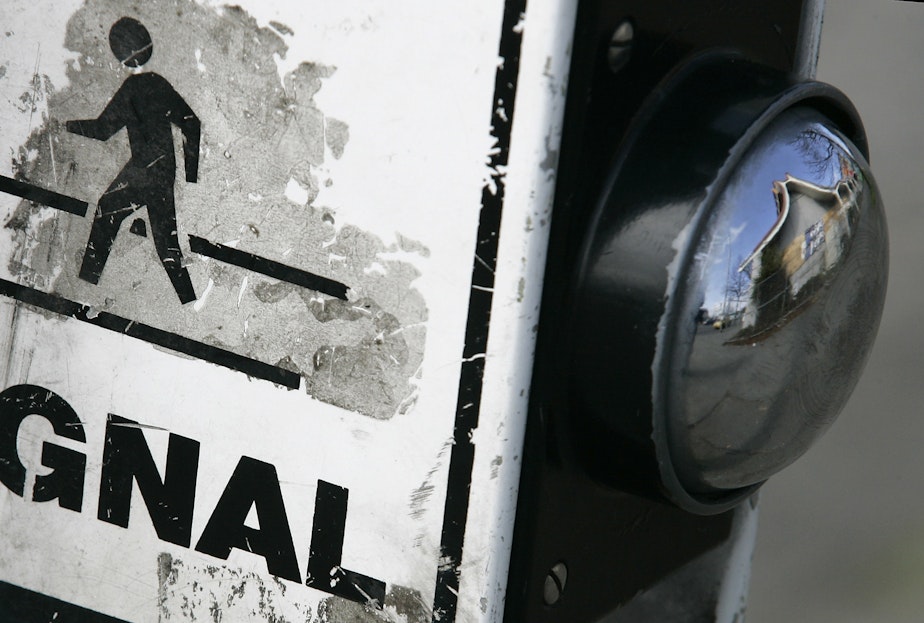Even with Vision Zero, traffic fatalities remain high in Seattle

In 2015, Seattle vowed to end traffic fatalities and serious injuries by 2030. Making progress towards that goal has been elusive.
In Seattle's Georgetown neighborhood, Erica Bush, one of the leaders of Duwamish Valley Safe Streets and an urban designer, is pointing out the different uses of East Marginal Way.
The busy arterial is five lanes wide and hosts the whir of cars and freight.
There's an endless procession of garbage trucks leaving a maintenance facility. A narrow strip of sidewalk hugs one side of the arterial. Semi-truck trailers are parked along the road.
There's no bike infrastructure.
The north side of the street marks the start of a residential block in Georgetown. There's a sandwich shop and, beyond that, trees.
Sponsored
Freight routes like East Marginal Way are one of the only ways to move out of neighborhoods like Georgetown and South Park. For Bush, the size of streets like this make it difficult to move through neighborhoods as a pedestrian or bicyclist.
"There is this huge discrepancy in that feeling of safety, because the scale of the spaces dedicated to uses are so disproportionate," Bush said.
In 2015, Seattle began its Vision Zero program with aspirations of ending traffic deaths by 2030. Busy arterial roadways are where the majority of these fatalities occur.
While some progress has been made on streets like Rainier Avenue, where collisions with bicycles and pedestrians are down 40%, overall deaths from traffic collisions in the city are trending up this year.
Two people died on a single stretch of 4th Avenue in SODO recently. SODO is one of the primary ways people get downtown from Georgetown. Bush said she wants Vision Zero to move faster where collisions occur frequently.
Sponsored
"These are huge freight routes that haven't seen adaptation in decades," Bush said. "And so we have to just be willing to make some changes in short succession because people are dying, and it needs to be responded to in an appropriate time frame."
Nationally, pedestrian fatalities have been on the rise for the last decade. Deaths and serious injuries from traffic collisions in Seattle have been trending up over the last two years as well. Allison Schwartz, the program coordinator for Vision Zero, said that the pandemic created an unusually dangerous situation for people walking, biking, rolling, or waiting for transit.
"One of the things that we had been relying on to help calm traffic and slow speeds, which is really critical for traffic safety, was the congestion on our roadways" Schwartz said.
Less cars led to vehicles moving faster, and vehicles moving at higher speeds are more likely to kill or seriously injure people.
While less traffic is a relatively new problem for Vision Zero, the program is also confronting deep structural inequities that are baked into the design of neighborhoods and the location of streets. People of color, especially Black people are disproportionately affected by car collisions. Last year, people who were unhoused made up almost 30% of total fatalities in the city.
Sponsored
"We have vulnerable community members," Schwartz said. "We have marginalized community members who are already disproportionately affected by so many things, including traffic collisions. If we can slow things down, we can reduce the effect on those neighbors of ours."
Soundside spoke to Allison Schwartz about Seattle's response to the rise in traffic fatalities and how the Seattle Department of Transportation can reach its Vision Zero goals.





